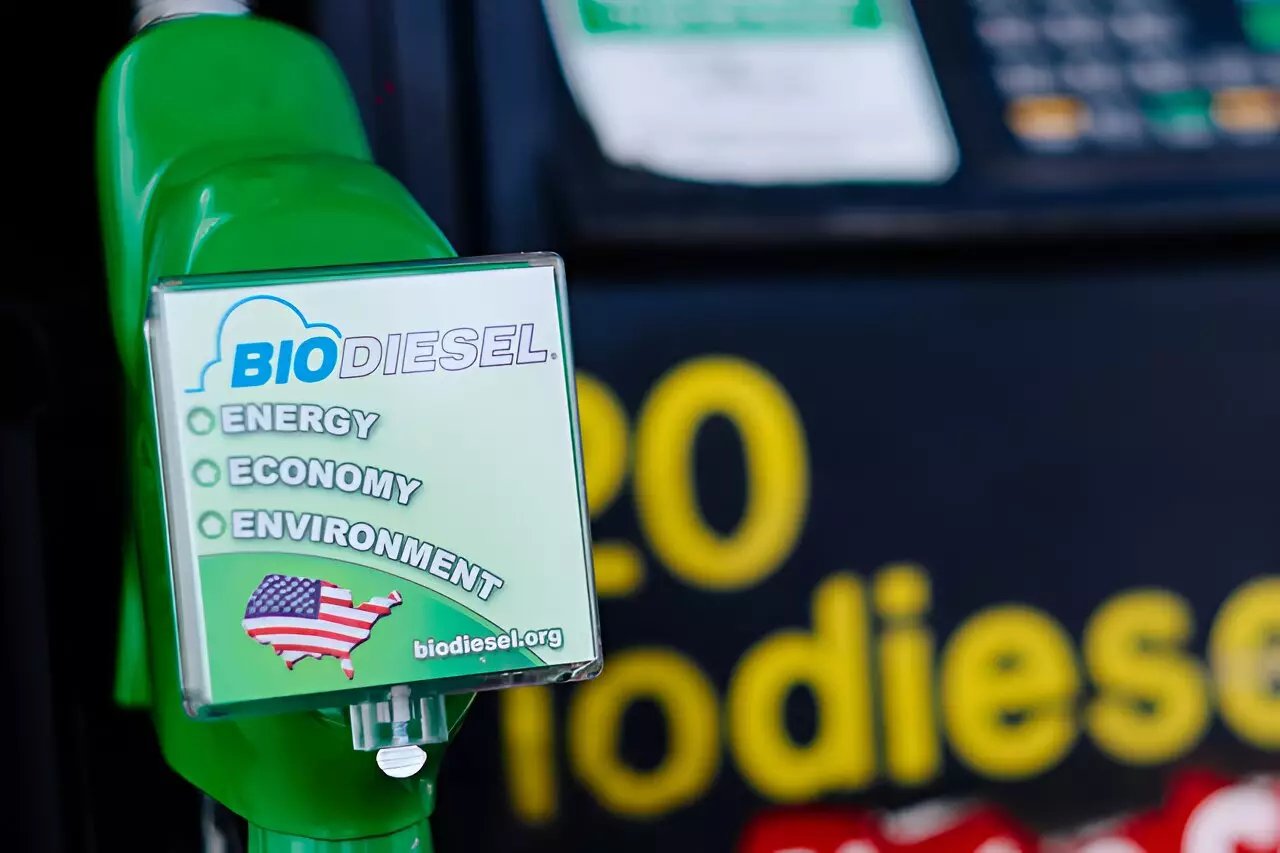The transition towards sustainable fuel sources has intensified as environmental concerns rise and greenhouse gas emissions from the transportation sector become increasingly scrutinized. In a significant advancement in renewable energy research, scientists at the National Renewable Energy Laboratory (NREL) have highlighted the barriers preventing the incorporation of higher percentages of biomass-based diesel fuel within traditional petroleum diesel. Their research, breaking new ground in the study of biodiesel mixtures, showcases blends of 20% to 80% biodiesel and proposes strategies to enhance their practicality for commercial use.
Biodiesel, primarily produced from fats, oils, and greases, stands out as a cleaner alternative to fossil fuels. In the United States, soybean oil is the predominant feedstock used for biodiesel production. Historically, blending biodiesel with petroleum diesel has been limited, typically within the range of 5% to 20%. The NREL team’s investigation into higher biodiesel concentrations illuminates the promising potential of these blends in significantly mitigating greenhouse gas emissions generated from the transportation sector.
A vital aspect of this research is the examination of how biodiesel functions when blended at higher levels and its compatibility with renewable diesel. Senior Research Fellow Robert McCormick noted the staggering volume of existing literature on biodiesel while emphasizing that high-blend studies have been largely overlooked. McCormick’s assertion underscores a prevalent gap in knowledge; thus, the NREL research serves as a beacon for future studies that could influence biodiesel’s role in the decarbonization of the transportation sector.
The team’s analysis delves into different biodiesel blends, specifically focusing on their characteristics when tested under varying conditions and concentrations. The findings suggest that when biodiesel blends exceed 50%, certain property changes could arise that may inhibit performance. However, researchers asserted that these challenges are not insurmountable. The comparative study of biodiesel blends with renewable diesel is particularly noteworthy, as it indicates potential for 100% renewable solutions, a significant leap toward sustainability.
Challenges with High-Level Blends
Despite the promise of higher biodiesel blends, several challenges deserve attention. One significant issue is the cloud point, which refers to the temperature that causes biodiesel to wax and potentially clog fuel filters, thus hindering engine operation. The typical biodiesel cloud point, reliant on the feedstock used, can present difficulties in colder climates. For instance, while the cloud point for soy-based biodiesel hovers around 32°F, systems reliant on 100% biodiesel could face operational issues as temperatures drop.
To address this concern, McCormick suggested methods to mitigate the cloud point challenge. By blending biodiesel with hydrocarbon stocks that possess lower cloud points or adjusting the overall blend percentages, the risks associated with winter operation can be minimized. Additionally, the research posed that utilizing alternative blendstocks, like kerosene, could aid in alleviating cold-start difficulties and potential engine lubricant accumulation, thus enhancing the usability of high-level biodiesel blends.
Further exploration into other influential characteristics of biodiesel, such as its density, oxidation stability, and water content, forms a critical component of the NREL study. Each of these properties can impact the blending ratio and ultimately influence engine performance and emissions control. Notably, oxidation stability is a concern for higher biodiesel blends, but the research team has suggested that this issue can be mitigated with the inclusion of antioxidant additives.
As the push for renewable fuels gains traction, the pressing need for strategic research in this domain is clear. The NREL paper functions as a roadmap, outlining essential areas of focus to thoroughly understand how high-level biodiesel blends affect diesel engine performance and emissions control systems. A concerted effort towards resolving these challenges will be crucial in moving towards a sustainable future where renewable fuels play a central role in reducing greenhouse gas emissions.
The path toward integrating higher biodiesel blends into mainstream usage is laden with both challenges and opportunities. While the NREL’s findings reveal significant hurdles, the potential for biodiesel as a sustainable fuel source remains clear, and ongoing research will be pivotal in driving innovation and refinement in this vital sector.


Leave a Reply